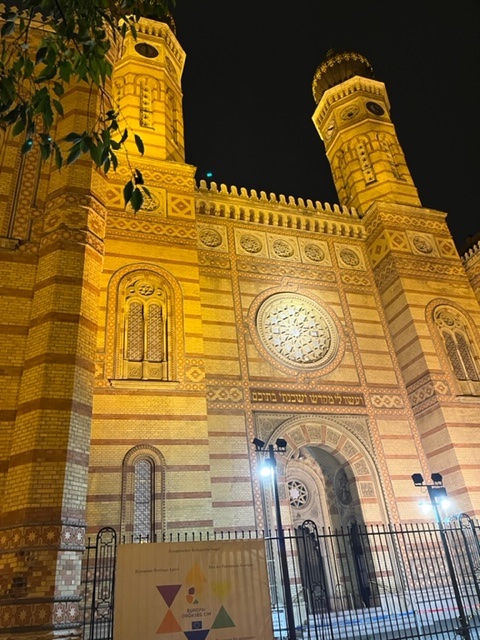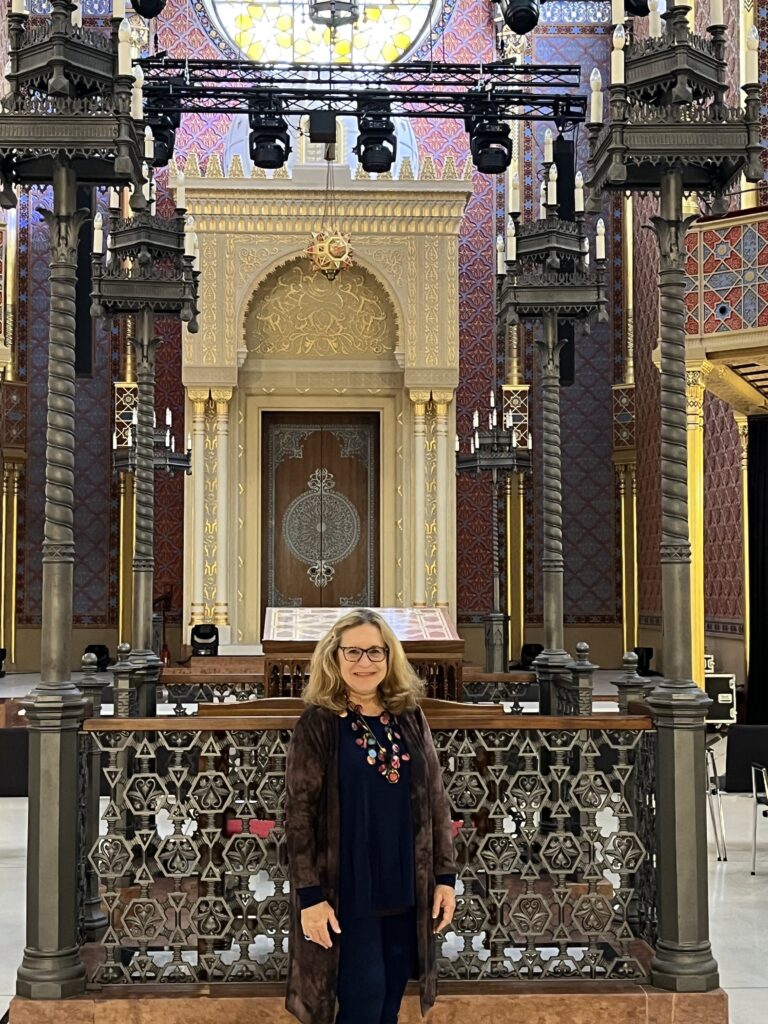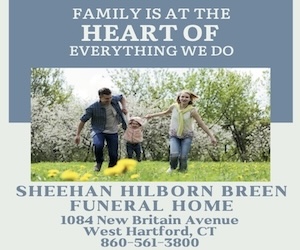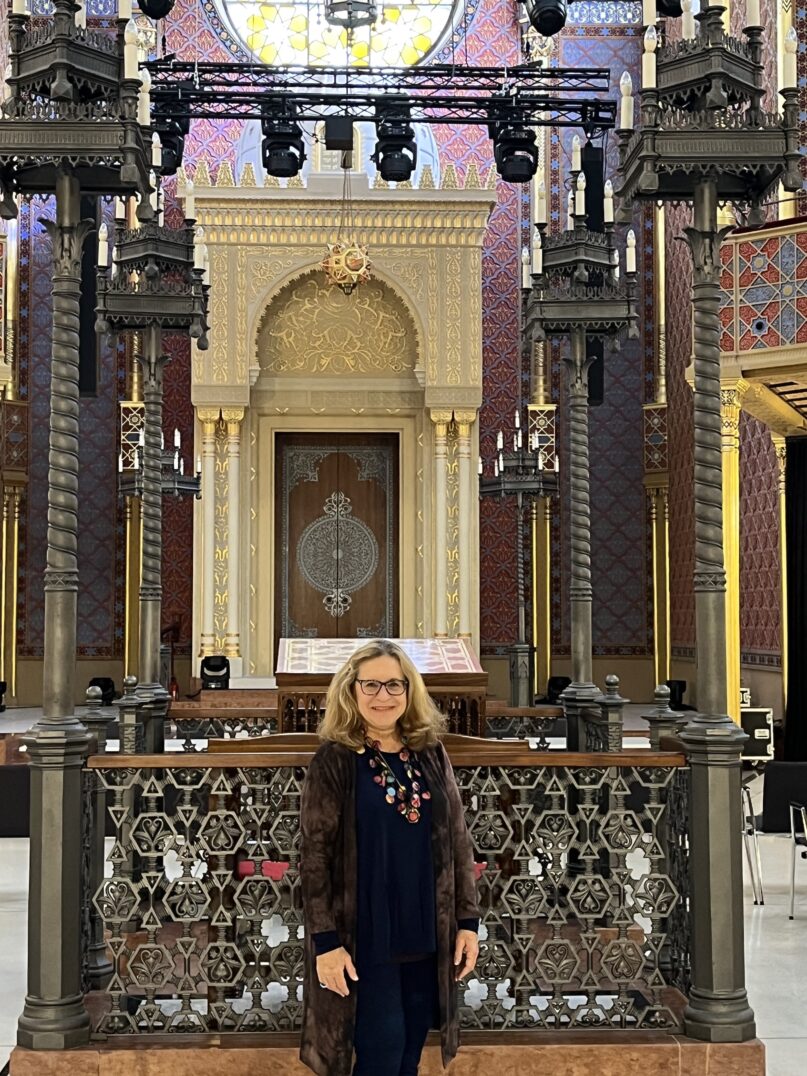
KOLOT
By Deborah Katchko-Gray
I received an invitation a few months ago to present workshops and master classes on my grandfather’s music at a European Cantors Association convention in Budapest, Hungary. On many levels, this was an exciting, meaningful, emotional, and validating journey for me.
Budapest was always a bucket list place to visit for me, with its family and cantorial history as well as the tragic Holocaust history to explore. As an American Jew, I learned much about the heroine and martyr Hannah Senesh, as well as Theodore Herzl, founder of Zionism—both from Budapest. There is also Raul Wallenberg and, as I discovered, Carl Lutz, who played a big role in rescuing Jews from Budapest during the desperate years of the Holocaust.
The family connection to Budapest always intrigued me. My grandfather, Adolph Katchko (Aron Kaczka), studied as a cantorial apprentice to the chief cantor of Hungary, Cantor Lazarus, at the grand Doheny Synagogue in Budapest sometime between 1918 and 1921. At some point my grandfather was the chief cantor of the 20th District of Vienna and, at another point, of Warsaw. My Aunt Helen was born in Budapest on May 23, 1915. Their last address was in Sombathelly, Hungary. I also had an uncle, Josef Kaczka, who was a cantor in Debrecin, Hungary in the 1920s to 1940s.
I was eager to walk in their footsteps and find any information about their lives while I was in Budapest. My husband and I arrived four days before the conference so we could tour and explore the area. All that the historians could find for me about my grandfather in Budapest was an advertisement for a film he was in, “The Voice of Israel,” that
was shown there in l936. By then, he was safely in New York
City, keeping his family alive and away from the madness that would arrive with Hitler.
Budapest is a magnificent city; dare I say more beautiful than Paris? My husband and I thought so. Large, elegant boulevards lined with mansions and grand buildings—each one a jewel.
The Jewish Quarter was alive with cafes and restaurants teeming with young people, who were walking by restored synagogues more magnificent than I imagined. The mix of colors and artistic woodwork, the detail and magnificence of the restored synagogues is reason enough to visit Budapest. Specifically, the Doheny, Rumbach, and Kacinczy Synagogues are just incredible. Each one has a tragic history of being desecrated by the Nazis and is now rebuilt to its former splendor and beauty.
We were interested in the Jewish history so we took three
Jewish tours. There was some overlap, but we wanted to keep learning as much as we could. There is so much to absorb, much was worth repeating.
The most moving of all was the exhibit “Shoes on the Danube.” Even walking towards it, I was overcome with emotion. Jews were marched to their deaths, past elegant apartment buildings with balconies and mansions lining the street. How could people watch them being marched and brutally shot into the river? Twenty thousand Jews were shot into the Danube over a short period of time. How can anyone look at that river and not feel something? The bronzed shoes of varying types number 60, which is symbolic of the six million Jews murdered during the Holocaust.
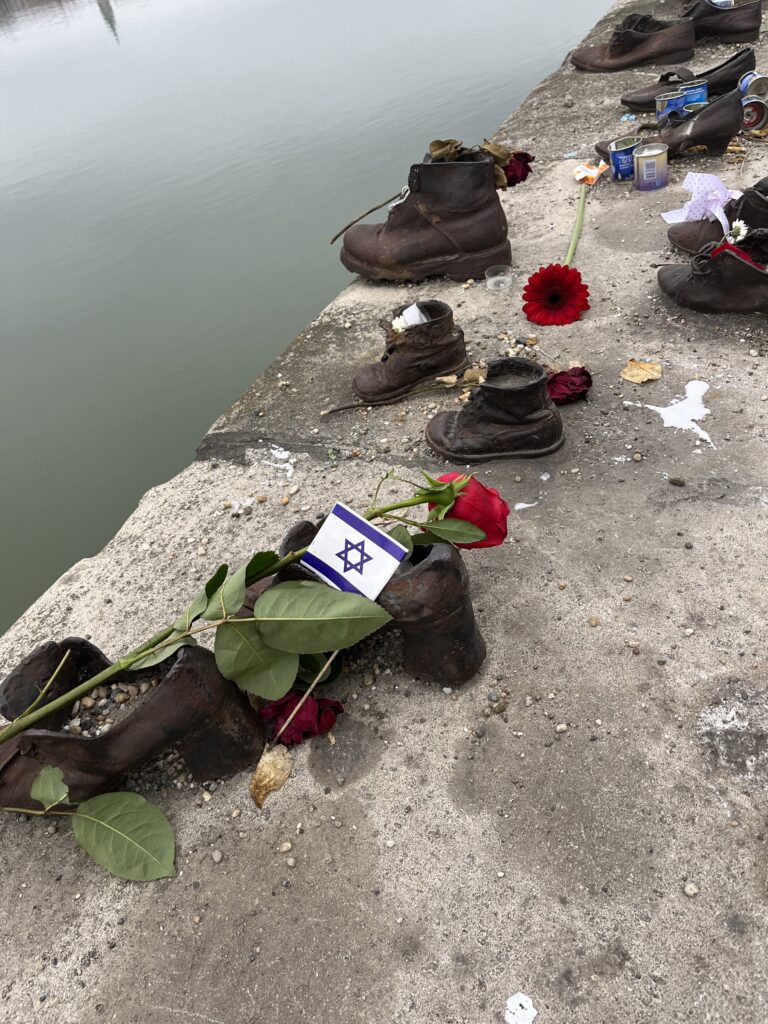
Gazing at the shoes, I thought my family would have ended up there if my grandfather had not left in l921. His brother Josef in Hungary and his family perished, as did the rest of the family, totaling 70 members or more. This outdoor exhibit on the banks of the Danube is a popular one. It is very close to the enormous Parliament building, one of the largest and grandest buildings in all of Europe. To think these horrors took place near grand buildings and homes; not that many years ago, makes our support of Israel, even with its issues, crucial. We are less vulnerable to genocide as long as there is a Jewish home.
I had read about people taking “sexy” selfies at Holocaust monuments, and I saw it happening in front of me. I was horrified but also didn’t know the selfie takers’ connection to the site. There was the child who took the stones people left on the shoes as we leave stones on a gravestone and threw them in the river. The mother was clueless. The grinning girl who put her Doc Martin next to an old boot that was similar in the exhibit and smiled for the Instagram moment was sickening.
It was surprising also to see the monuments for Hannah Senesh and Raul Wallenberg far from the touristy areas and out of the way considering how highly they are regarded in our history. Hannah Senesh has a small park and another memorial in a suburban area across from the old Nazi prison where she was tortured. We wanted to see anything associated with her and our guide made a special trip so we could see this. The monument was only a week old! I was shocked it took this long for it to be done!
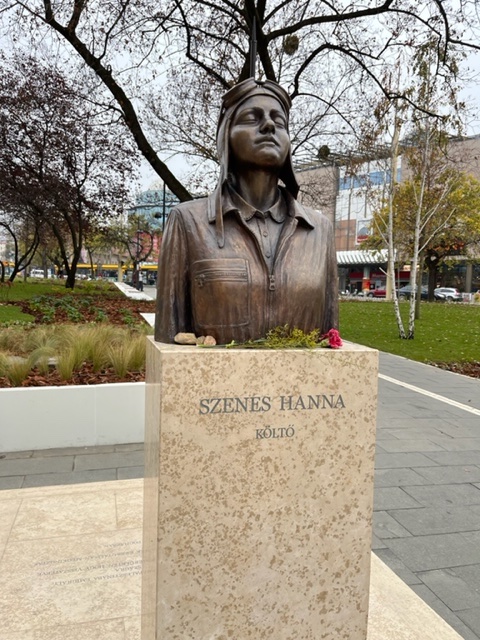
Raul Wallenberg, also a giant in our history of rescuers, had a monument in an overgrown park in the middle of a suburban area; the monument was impossible to find without asking direction. I was shocked to see it was not in the Jewish Quarter, where walking tours take tourists to all the important sites. The Russians reluctantly installed the monument when Hungary was under their control, and it was purposely placed in a faraway location.
So much to think about, and so many questions!
We saw the Frankel Synagogue, which was built inside of apartment buildings so it would be safer from antisemitism in the 1920s. The synagogue was surrounded by apartment buildings, and the back of it faced the Danube. The synagogue was beautiful inside, literally a hidden gem.
Another very moving visit was to the Glass House, where Carl Lutz, a Swedish diplomat, helped save thousands of Jews. At one point 3,000 Jews lived in this complex of small buildings meant to be a glass factory. There are books written about this incredible story of bravery and tragedy.
After four days of intense touring and Jewish history, mostly tragic, we had the joy of being in the Rumbach restored synagogue, which was rebuilt to be a performance center as well. It is only a few blocks from the Doheny Synagogue.
The Doheny was a bit too liberal with its organ for some, so the Rumbach was built as a more traditional synagogue. What was amazing was the multi-million-dollar restoration, totally modern,
with a museum on the top floor, modern conference rooms, lockers, Broadway-sized restrooms, and a center bima that lowered into the floor!
I was so delighted and honored to be part of this group of traditional cantors from all over Europe, Israel, Canada, and the UK. They were completely accepting of me as a woman cantor and showed the greatest respect for my teaching and singing my grandfather’s traditional music. I gave my first master class and two very talented singers shared pieces by my grandfather. One was a cantor from Israel, and the other was a woman rabbi from Berlin. Both had incredible voices and souls.
There were two panel discussions: “Is Nusach Still Important in the 21st Century?” and “What Has Lockdown Taught Us?” I loved being part of both. There were concerts, of course, and I loved singing a Yiddish Theater medley in one and the new David Broza L’cha Dodi and my father’s favorite Yivarechecha in the other.
To look out at this restored synagogue, knowing my grandfather sang and studied at the Doheny nearby, and bless this group of traditional
cantors from all over the world with a prayer my father sang all his life, was a dream come true. Had my grandfather not left in l921, my father would not have been born in New York City nor would I be here.
There are moments in life that just fill your heart to overflowing. That’s how I felt in Budapest.
Deborah Katchko-Gray lives in Ridgefield, Conn. and is the cantor of Congregation Shir Shalom of Westchester and Fairfield Counties.








 Southern New England Jewish Ledger
Southern New England Jewish Ledger